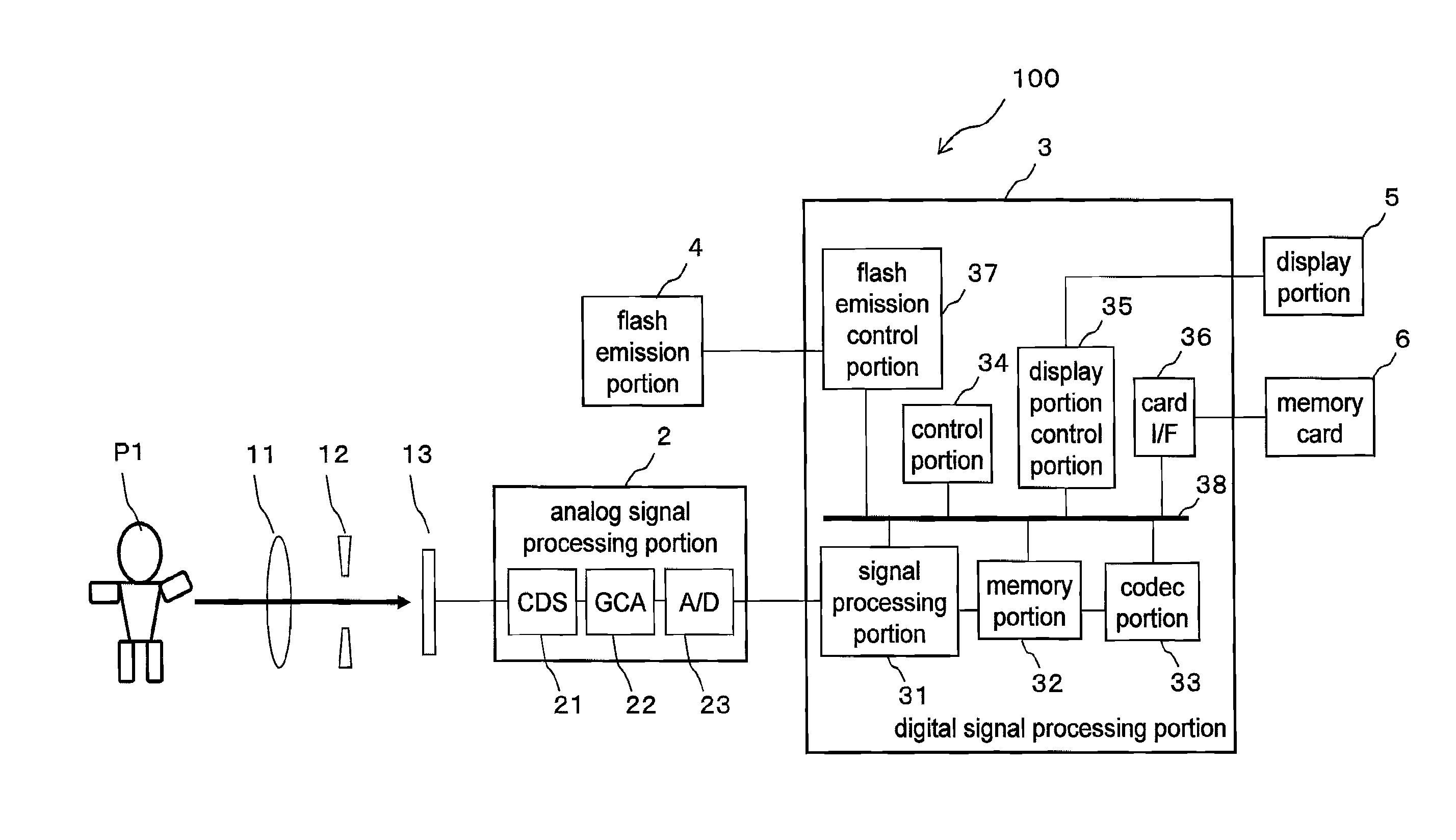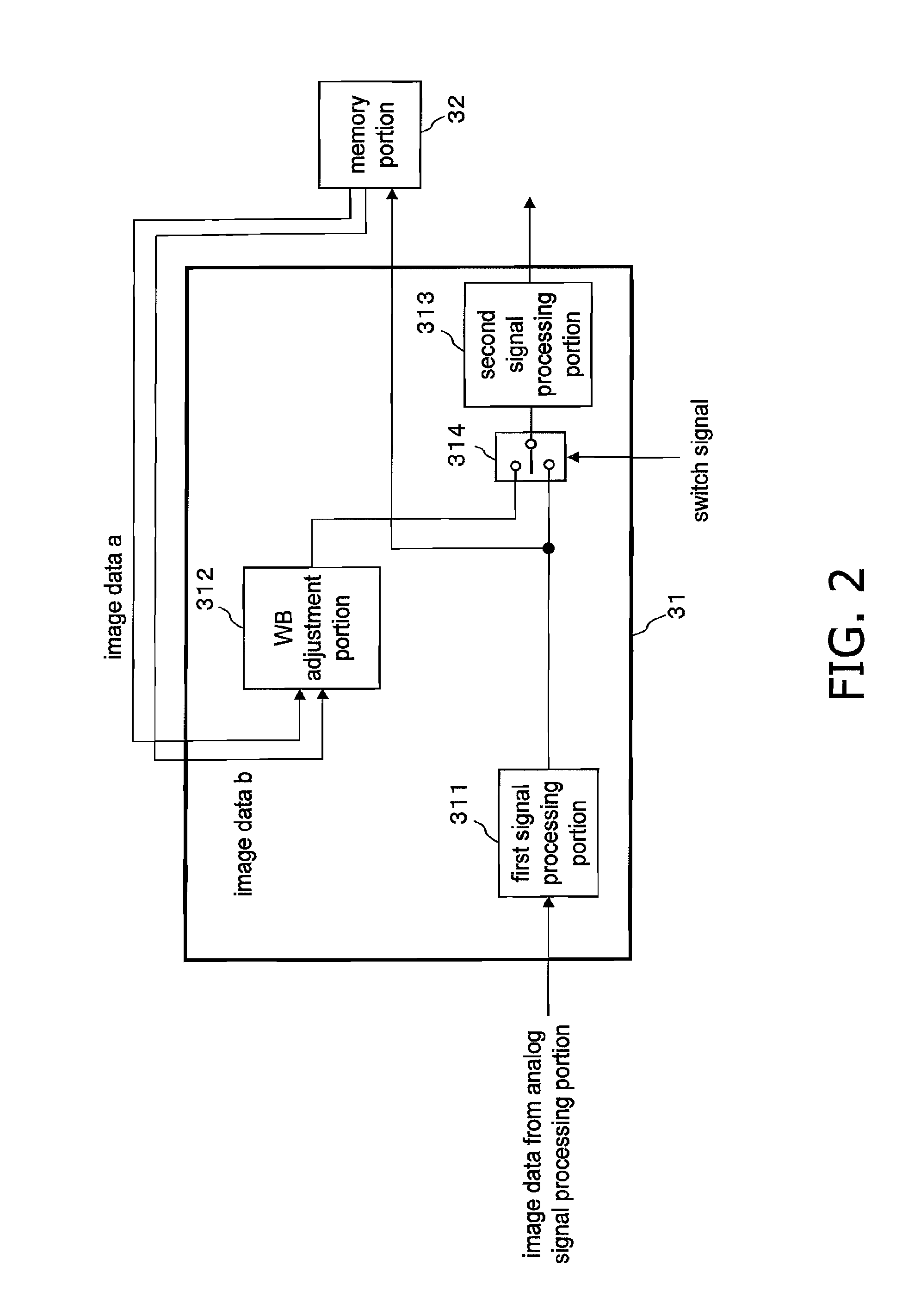White balance adjustment device, image capture device, white balance adjustment method, storage medium, and integrated circuit
a technology of image capture device and white balance adjustment, which is applied in the direction of color signal processing circuit, color television details, electrical apparatus, etc., can solve the problems of unrealistic solution, unnatural captured image, and the structure of conventional image capture device, so as to reduce color shifting, white balance, and correct adjustment
- Summary
- Abstract
- Description
- Claims
- Application Information
AI Technical Summary
Benefits of technology
Problems solved by technology
Method used
Image
Examples
first embodiment
1.1: Configuration of Image Capture Device
[0094]First, the image capture device according to the first embodiment is described.
[0095]FIG. 1 schematically shows the configuration of an image capture device 100 (such as a digital camera) according to the first embodiment of the invention. FIG. 2 schematically shows the configurations of a signal processing portion 31 and a memory portion 32. FIG. 4 schematically shows the configuration of a WB adjustment portion 312 serving as the white balance adjustment device.
[0096]As shown in FIG. 1, the image capture device 100 is provided with an image capture lens 11 that focuses light from an object to capture P1, an diaphragm 12 for adjusting the amount of light from the object to capture P1 that is focused by the image capture lens 11, an image capture portion (image capture element) 13 that obtains light from the object to capture P1 as an image signal (video signal) by photoelectric transformation, an analog signal processing portion 2 for...
second embodiment
[0172]In the first embodiment of the invention, the luminance value of the image data that are captured with emitting a flash and the luminance of the image data captured without emitting a flash are used to find a single mixture ratio W0 (or smoothed mixture ratio W) for each pixel. The second embodiment of the invention describes an implementation in which mixture ratios (or smoothed mixture ratios) that correspond to the R component, G component, and B component of the image data are found for each pixel, and this is described using FIGS. 1 and 7. It should be noted that the image capture device according to this embodiment differs from the image capture device 100 of the first embodiment in that the WB adjustment portion 312 is replaced with a WB adjustment portion 412. In other regards it is identical to the image capture device 100 according to the first embodiment, and thus is not described. FIG. 7 illustrates how a WB processing portion 4120 is made from a WB coefficient cal...
modified example
[0204]Next, an image capture device according to a modified example of the second embodiment is described.
[0205]FIG. 8 schematically shows the configuration of a WB adjustment portion 412A of the image capture device according to this modified example.
[0206]The image capture device of this modified example is the image capture device according to the second embodiment, except that its WB processing portion 4120 has been substituted with the WB processing portion 4120A that is shown in FIG. 8. Apart from this, it is identical to the image capture device according to the second embodiment, and thus will not be described in detail.
[0207]It should be noted that FIG. 7 shows the three data input / output lines (connection lines) for R, G, and B, but in FIG. 8 the three R, G, and B data sets are treated as a single vector data set, and the three RGB input / output lines (connection lines) are shown as a single input / output line (connection line). Further, the LPF for R 4122r, the LPF for G 41...
PUM
 Login to View More
Login to View More Abstract
Description
Claims
Application Information
 Login to View More
Login to View More - R&D
- Intellectual Property
- Life Sciences
- Materials
- Tech Scout
- Unparalleled Data Quality
- Higher Quality Content
- 60% Fewer Hallucinations
Browse by: Latest US Patents, China's latest patents, Technical Efficacy Thesaurus, Application Domain, Technology Topic, Popular Technical Reports.
© 2025 PatSnap. All rights reserved.Legal|Privacy policy|Modern Slavery Act Transparency Statement|Sitemap|About US| Contact US: help@patsnap.com



